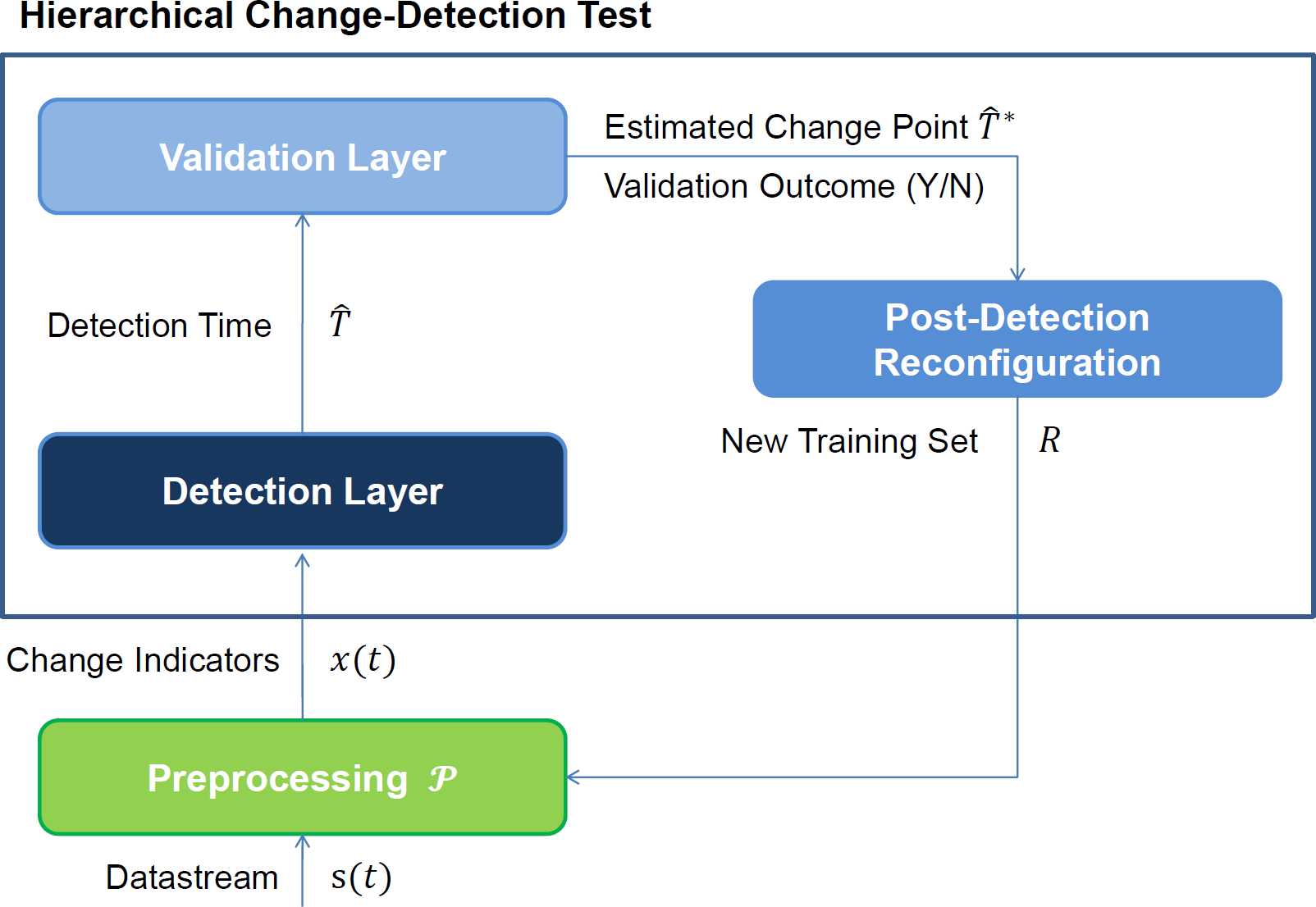|
The Hierarchical ICI-based CDT
The Problem One of the most important challenges in datastream analysis is the online detection of changes affecting the data-generating process. Changes might reveal critical situations, such as a fault affecting a sensing apparatus, an anomalous event, or an unforeseen evolution of the surrounding environment, to name a few examples. Methods designed to detect changes in datastreams are typically referred to as change-detection tests (CDTs). Due to their statistical nature, CDTs intrinsically introduce false-positives, which might prompt costly and unnecessary reactions to the detected -not existing- change. Hierarchical CDTs We propose hierarchical change-detection tests (HCDTs), powerful algorithms that combine different techniques to detect and validate changes [Alippi et al. 2016]. HCDTs feature a two-layered architecture consisting in a detection layer and validation layer, and implements an automatic reconfiguration mechanism.
Figure 1 A scheme illustrating HCDTs architecture and basic functioning. When the input datastream {s(t), t = 1,..} can not be modeled as a sequence of i.i.d. random values, it is necessary to perform a preliminary processing P yielding the stream of i.i.d. change indicators X = {x(t), t = 1,...}, otherwise s(t) = x(t). The detection layer runs a CDT on the input stream X, and activates the validation layer as soon as it detects a change at time \hat{T}. Then, the validation layer identifies a suitable validation sequence V and runs an HT to assess whether V contains a change point or not. When the change point is found at \hat{T^*}, the detection is confirmed, and a subsequence of the datastream R = {s(t), t = 1, .., \hat{T^*} is identified to reconfigure the HCDT and possibly the preprocessing. Differently, when the change is not validated, R remains the original training sequence and the HCDT is restarted in its previous conditions. This automatic reconfiguration makes the HCDT able to continue the monitoring activity after each detected change, thus being able to detect any further departure from the post-change conditions. Hierarchical ICI-based CDTs The hierarchical ICI-based CDT [Alippi et al. 2011 b] belongs to the family of ICI-based CDTs [Alippi et al. 2011 b], that sequentialy monitors a set of features extracted from datastream, and assess feature stationarity by means of the ICI rule [Goldenshluger and Nemirovski 1997]. For a detailed description of the hierarchical ICI-based CDT, please refer to [Alippi et al. 2011 a]. A distributed solution meant for wireless sensor networks has been presented in [Alippi et al. 2011 c]. Codes are available for Download (Matlab Package Updated on March, 2016) A Matlab package containing the functions implementing 4 HCDTs used in [Alippi et al. 2016] :
See [Alippi et al. 2016] for deatiled description of these HCDTs |
|
References [Alippi et al. 2016] Hierarchical Change-Detection Tests [Alippi et al. 2011 a] A Hierarchical, Nonparametric Sequential Change-Detection Test
[Alippi et al. 2011 b] A just-in-time adaptive classification system based on the intersection of confidence intervals rule,
[Alippi et al. 2011 c] A distributed Self-adaptive Nonparametric Change-Detection Test for Sensor/Actuator Networks,
[Goldenshluger and Nemirovski 1997] On spatial adaptive estimation of nonparametric regression. |
